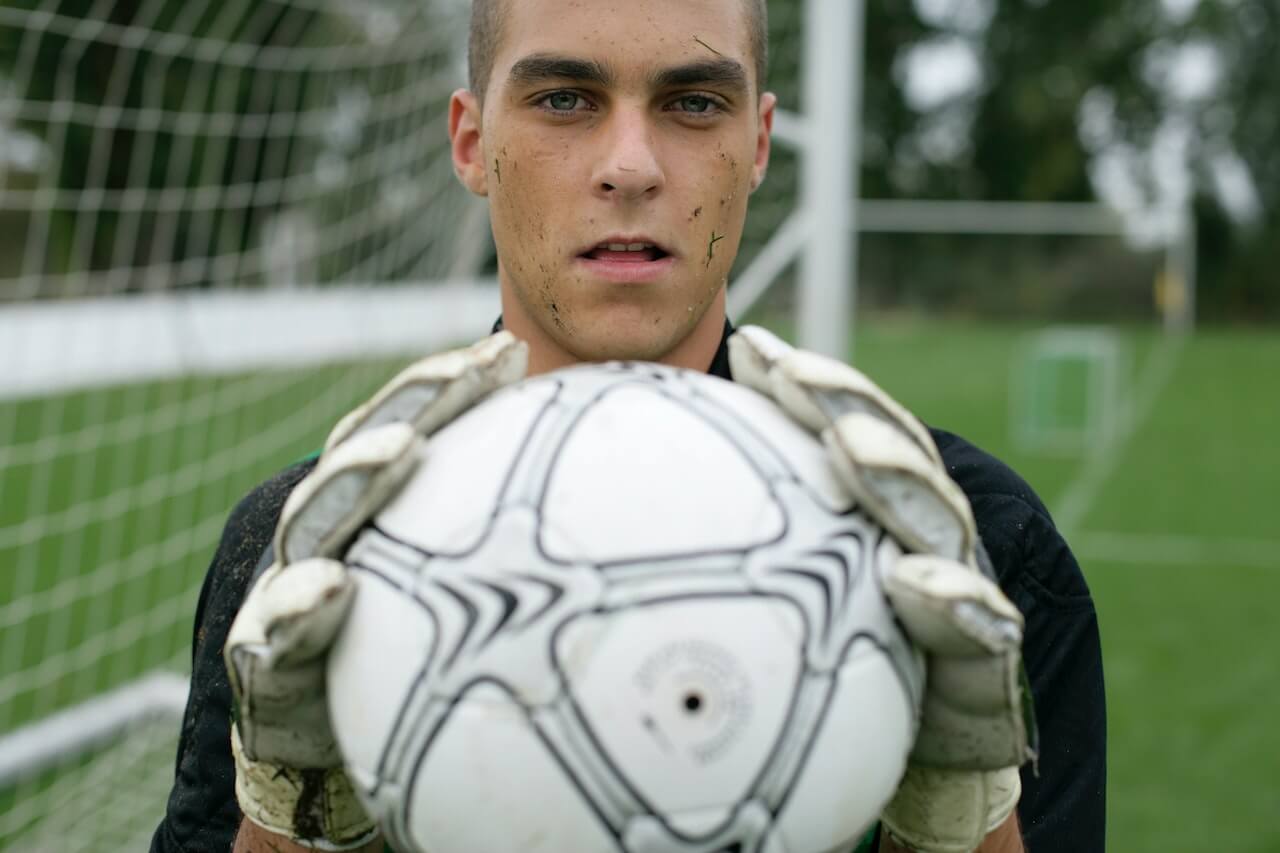Goalies gloves are an essential piece of equipment for any ice hockey goalie. The gloves are designed to protect the goalie’s hands and allow them to catch and block pucks with ease. A well-made goalie glove can make all the difference in a game, giving the goalie the confidence they need to make big saves and keep their team in the game.
Goalies gloves come in a variety of shapes and sizes, and each goalie has their own preference when it comes to fit and feel. Some goalies prefer a glove with a deep pocket, while others prefer a shallower pocket that allows for quicker releases. The construction of the glove is also important, with many gloves featuring a combination of leather and synthetic materials to provide durability and flexibility.
When shopping for a goalie glove, it’s important to consider factors such as fit, construction, and price. A well-made glove can be a significant investment, but it’s worth it to ensure that the goalie has the protection and performance they need to play at their best. With the right glove, a goalie can make big saves and help their team win games.
History of Goalie Gloves
Goalie gloves have come a long way since their inception in the early 1900s. Initially, goalies used regular work gloves to protect their hands from the hard rubber pucks. However, as the game evolved, so did the gloves used by goalies.
In the 1920s, the first purpose-built goalie gloves were introduced. These gloves were made of leather and featured a thick padding on the palm and backhand. They also had a cuff that extended up the wrist to provide additional protection.
By the 1950s, goalie gloves had undergone significant changes. The gloves were now made of synthetic materials like nylon and featured a curved shape that allowed for better puck control. The padding had also become more advanced, with some gloves featuring a layer of foam rubber for added protection.
In the 1970s, goalie gloves continued to evolve. The introduction of fiberglass allowed for a more lightweight and durable glove, while the addition of a pocket on the backhand made it easier for goalies to catch and control the puck.
Today, goalie gloves are highly specialized pieces of equipment. They are made of lightweight materials like synthetic leather and feature advanced padding systems that provide maximum protection while still allowing for flexibility and mobility. Many gloves also feature adjustable cuffs and straps that allow for a customized fit.
Types of Goalie Gloves
Goalie gloves are an essential piece of equipment for any goaltender. They not only protect the hands but also provide a better grip on the stick and help control the puck. There are different types of goalie gloves available in the market. Here are some of the most common types:
- Blocker: The blocker is the larger glove worn on the goalie’s stick hand. It is designed to protect the hand and forearm while also providing a surface to deflect pucks away from the net. Blockers come in different sizes and shapes to fit the goalie’s hand and playing style.
- Catcher: The catcher is the glove worn on the goalie’s non-stick hand. It is designed to catch and hold pucks that are shot at the net. Catchers come in different sizes and styles, with some having deeper pockets for better puck control.
- Hybrid: Hybrid gloves combine the features of both the blocker and catcher into one glove. They are designed to provide maximum protection and flexibility for the goalie.
- Fingerless: Fingerless gloves are designed to provide more mobility and flexibility for the goalie’s fingers. They are often used by younger or beginner goalies who are still developing their skills.
When choosing a goalie glove, it is important to consider the level of play, position, and personal preference. A well-fitting glove that provides adequate protection and mobility can make all the difference in a game.
Features to Consider When Buying Goalie Gloves
Goalie gloves are an essential piece of equipment for any hockey goalie. They not only protect the hands but also provide the necessary grip to handle the puck. When buying goalie gloves, there are several features to consider:
- Size: The size of the glove is crucial for a proper fit. Goalie gloves come in various sizes, and it’s essential to measure the hand’s circumference to determine the correct size.
- Material: The material used in the construction of the glove will affect its durability, flexibility, and weight. Most goalie gloves are made of synthetic leather, which is lightweight and durable.
- Palm: The palm of the glove is essential for grip and control. Some gloves feature a textured palm, while others have a smooth surface. Goalies should choose a palm that provides the necessary grip and feels comfortable.
- Cuff: The cuff of the glove can vary in length, and goalies should choose a cuff that provides the necessary protection and mobility. Some gloves have a shorter cuff, while others have a longer cuff that extends up the arm.
- Padding: The padding in the glove is crucial for protection against impact. Goalies should choose a glove with adequate padding in the palm, backhand, and fingers.
- Strapping: The strapping system on the glove is essential for a secure fit. Goalies should choose a glove with a strapping system that feels comfortable and provides a snug fit.
Overall, when buying goalie gloves, goalies should consider their playing style, budget, and personal preferences. By choosing the right glove, goalies can protect their hands and perform at their best on the ice.
How to Properly Care for Goalie Gloves
Goalie gloves are an essential piece of equipment for any goalkeeper. They help protect the hands from injury and provide a better grip on the ball. Proper care of goalie gloves is important to ensure they last as long as possible and perform at their best.
Here are some tips on how to properly care for goalie gloves:
- After each use, wipe down the gloves with a damp cloth to remove any dirt or debris.
- Avoid exposing the gloves to extreme temperatures, such as leaving them in a hot car or freezing them.
- Do not dry goalie gloves in direct sunlight or using a heat source such as a hair dryer. Instead, let them air dry in a cool, dry place.
- Store gloves in a cool, dry place away from direct sunlight or moisture.
- Do not machine wash or dry goalie gloves. This can damage the materials and affect their performance.
- Apply a small amount of glove wash or mild soap to the gloves and gently rub in with a damp cloth to remove any stubborn stains or odors.
- Avoid using harsh chemicals or bleach on goalie gloves as this can damage the materials.
By following these tips, goalkeepers can ensure their gloves are well-maintained and ready to perform at their best during games and practices. Proper care of goalie gloves can also help extend their lifespan, saving goalkeepers money in the long run.
Famous Goalies and Their Preferred Gloves
Goalies are known for their unique preferences when it comes to their equipment, and gloves are no exception. Here are some famous goalies and the gloves they prefer:
Henrik Lundqvist
The former New York Rangers goalie, Henrik Lundqvist, is known for his love of the Bauer Vapor 1X Pro gloves. He has been using these gloves for several years and has even helped Bauer design them to his liking. Lundqvist prefers the snug fit and flexibility of these gloves, which allows him to move his hands quickly and easily.
Marc-Andre Fleury
Another famous goalie who has a strong preference for his gloves is Marc-Andre Fleury. The Vegas Golden Knights goalie has been using the CCM Premier Pro gloves for several years. Fleury likes the flexibility and protection that these gloves provide, which allows him to make quick and confident saves.
Carey Price
The Montreal Canadiens goalie, Carey Price, is known for his preference for the CCM Premier Pro gloves. Price likes the snug fit and flexibility of these gloves, which allows him to move his hands quickly and easily. He also appreciates the extra protection that these gloves provide, which helps him make confident saves.
Overall, goalies have a wide range of preferences when it comes to their gloves. Some prefer a snug fit, while others prioritize flexibility or protection. Regardless of their preferences, these famous goalies have found gloves that work well for them and have helped them make some incredible saves throughout their careers.
Conclusion
After analyzing the different types of goalie gloves available in the market, it is clear that each type has its advantages and disadvantages. The right choice of goalie glove depends on the individual player’s preferences and playing style.
Hybrid gloves offer a balance between flexibility and protection, making them ideal for players who need to move quickly and frequently. On the other hand, Blocker gloves are designed for maximum protection, making them perfect for players who are comfortable sacrificing some mobility for safety.
Catch gloves are a popular choice among players who prioritize catching and puck control. They offer a large pocket and a wide range of motion, allowing players to make quick and accurate saves. However, they may not provide as much protection as other types of gloves.
Ultimately, the best goalie glove for a player is one that feels comfortable and provides the necessary protection for their playing style. It is important to try on different types of gloves and experiment with different styles to find the perfect fit.







